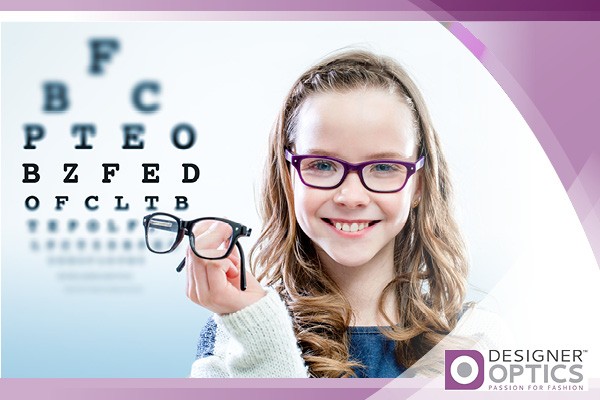
Posts
10 Signals That Your Child May Need Corrective Lenses
Despite school vision screenings, many children suffer with problems seeing without even realizing it. For some, this may lead to falling grades as it becomes increasingly difficult to read what is on the blackboard, while others may not be able to focus clearly on the print that is right there on their desk.
Parents and teachers should be tuned in to the following signs that are often noted in children whose vision is less than perfect:
Squinting
Children who have trouble seeing things at a distance will often slightly close their eyes in order to sharpen the image. Most don’t even realize it, as it just becomes second nature to them. Watch your child as they are looking at the television to see if they are having to squint in order to keep up with the program.
Sitting on the Floor in Front of the TV
This is a classic sign that your child is having difficulty seeing from a distance, or that they are nearsighted. Nearsighted people have clear vision only when the object is within close range. To test your theory, put on a program that is displaying words or images, and ask your child to identify them from the couch, rather than from right in front of the television set.
Head Tilting
The trouble with identifying a vision problem in children is that many assume that they way they see the world is normal. Strabismus is a condition where there is an imbalance in the eye muscles, causing kids to have to tilt their heads in order to correct double vision. You will notice this more prominently when they are looking downwards or in a certain direction.
Headaches
A child who is farsighted is having difficulty focusing on objects close to the face. Attempting to compensate for this will often cause headaches, particularly across the forehead.
Light Sensitivity
Another sign of strabismus is squinting one eye when exposed to bright lights or sunlight.
Eye Rubbing
We associate rubbing the eyes with being tired, but if done excessively it could be a sign of a vision problem. Trying to correct vision will cause eye fatigue, which leads to eye rubbing. Other medical conditions can also cause this, such as pink eye and allergies.
Reading With the Finger
Using the finger to point at words is normal when children are first learning how to read, but if you note it in an older child it could be a sign that the words are crowding together. This could be indicative of an eye disorder such as amblyopia, where letters appear to be very close to each other.
Skipping Lines While Reading
This is a classic sign of astigmatism, where the child’s cornea is football shaped rather than round. Astigmatism is one of the most common vision problems affecting children, and affects seeing objects both near and far with clarity.
Covering One Eye to See More Clearly
When you child is covering one eye to help correct their vision, it could indicate a number of different problems that affect vision. This includes double vision or even a cataract. The problem should be addressed immediately in order to avoid your child developing amblyopia in the lesser used eye.
Unexplained Tearing
Some children sleep with the eyelids partially open, causing the eyes to dry out. During the day, they will tear excessively in order to compensate. This will interfere with their ability to see clearly.
As you can see, not all vision problems can be detected with the simple vision test that is administered by schools. If you note any of the above behaviors in your child, schedule an eye appointment with an eye doctor immediately. The faster the problem is corrected, the quicker they can get back to being an A+ student.
Did this answer you question does my child need glasses? If your child does need corrective glasses, you’ll find a style they love at Designer Optics.






You must be logged in to post a comment Login